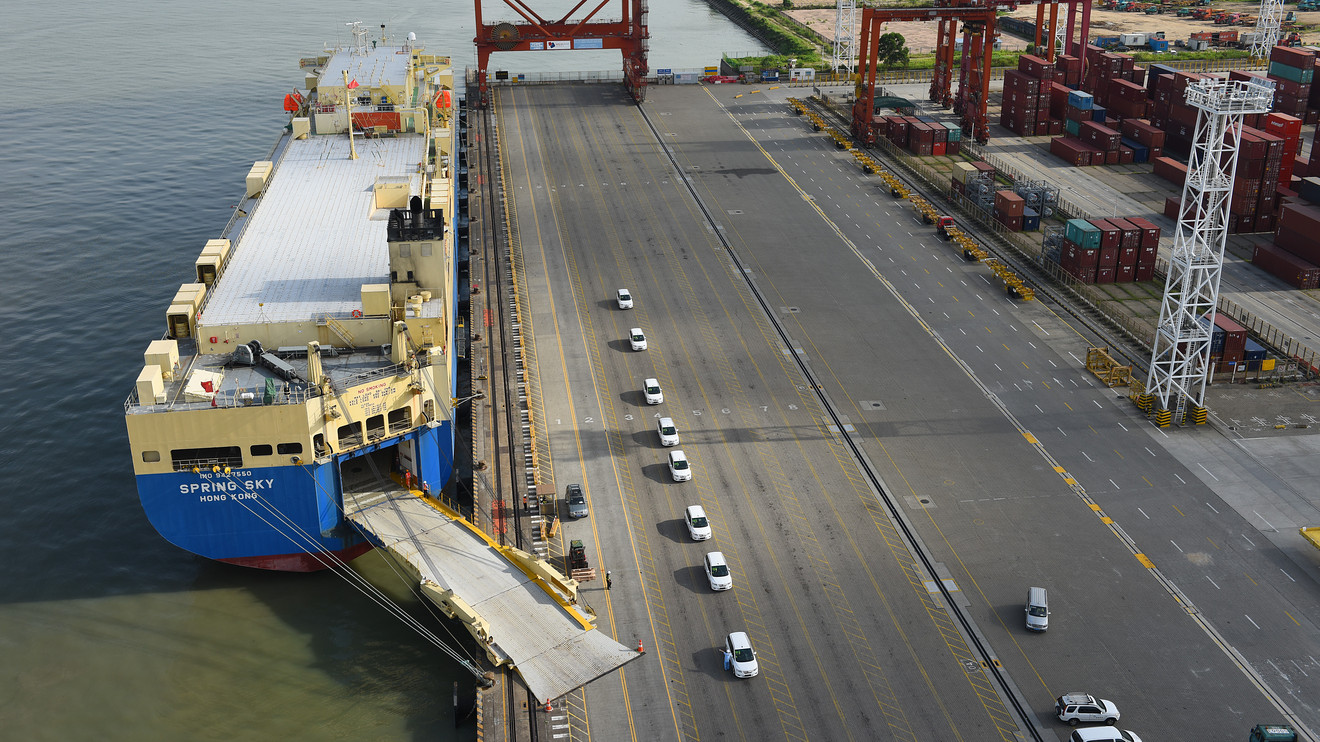U.S. stocks were firmly lower Tuesday after the U.S. launched a new round of tariffs on $112 billion in Chinese goods Saturday, with China retaliating with new levies of its own, while a key gauge of the U.S. manufacturing sector signaled the first contraction in activity in three years.
The new trade barriers and a decline in China’s yuan currency highlight the uncertainties surrounding the escalating tariff tiff between the two economic superpowers that threatens to throw the rest of the world into recession, as U.S. markets reopen Tuesday following their closure Monday for the Labor Day holiday.
How are the markets faring?
The Dow Jones Industrial Average
DJIA, -1.25%
fell 379 points, or 1.4%, to 26,024, while the S&P 500 index
SPX, -0.90%
dropped 29 points, or 1% to 2,897. The Nasdaq Composite Index
COMP, -1.32%
declined 1.4% to 7,854, a drop of 109 points.
Last week, the S&P 500 saw a 2.8% rise, while the Dow gained 3% — their strongest weekly advances since the week ended June 7. The Nasdaq rose 2.7% for its biggest weekly rise since the period ended June 21.
However, the major indexes logged their first losing month since May — and their second losing month of 2019. The S&P 500 saw a 1.8% monthly fall, the Dow declined 1.7% and the Nasdaq gave up 2.6%.
Read: History says the stock market’s volatile August paves the way for more losses in September
What’s driving the market?
The U.S. manufacturing sector shrank in August, according to the Institute for Supply Management’s purchasing manager’s index, which showed a reading of 49.1 last month, down from 51.2 in July, it’s lowest since January of 2016. Any reading below 50 indicates contraction. The less closely watched Markit PMI for August came in a 50.3, above the previous estimate of 49.9, but still the lowest reading since September 2009.
The ISM data were “weaker than expected, with the market impact of the 2.1 percentage-point drop likely magnified by the level dropping below the 50 mark,” wrote Jim O’Sullivan chief U.S. economists with High Frequency Economics, in a note to clients. Though the reading isn’t enough to signal a coming recession, as manufacturing PMIs usually hit the low 40s during an economic contraction, “the report will undoubtedly add to fears that more weakness is ahead.”
The reading added to worries that the continuing U.S.-China trade war is weighing on manufacturers around the globe as they battle a steady increase in trade barriers between the world’s two largest economies. Beijing filed a complaint with the World Trade Organization over U.S.’s increase in tariffs, which took effect over the weekend. Bloomberg News also reported on Monday that the parties are struggling to agree on what to discuss in trade talks.
Tuesday morning, President Trump talked up the state of negotiations, writing in a tweet that “we are doing very well,” while urging Beijing to strike a deal before the 2020 presidential election.
Meanwhile, China’s yuan
USDCNY, +0.0976%
weakened Tuesday, nearing 7.2 to the dollar, after first breaching the psychologically important 7 level a month ago, when Trump announced the latest round of tariffs on Chinese imports that were implemented Sunday. The yuan is seen by some currency traders as a reflection of the intensifying Sino-American trade war.
Meanwhile, concerns over Britain’s exit from the European Union under new Prime Minister Boris Johnson have increased. Johnson has threatened a snap election if a group in parliament succeed in blocking a so-called no-deal exit, which would result if Britain is unable to reach a separate trade agreement with the EU by the Oct. 31 deadline. Johnson’s Conservative Party lost its parliamentary majority Tuesday when one of its members defected in protest of a no-deal exit, increasing the odds of new elections.
In other data, construction spending rose 0.1% in July after falling 1.3% in June, the Commerce Department said Tuesday, below the 0.3% increase expected by economists polled by Econoday.
Which stocks are in focus?
Boeing Co.
BA, -2.72%
shares were under pressure Tuesday after a report in The Wall Street Journal over the weekend that the airplane manufacturer had run into difficulties with global regulators that could lead to more delays in bringing the rounded 737 Max fleet back into service. The company’s stock fell 3.3% early Tuesday, amounting to a roughly 83-point drag on the Dow.
Shares of fellow Dow Component Apple Inc.
AAPL, -1.58%
were down 1.9% after new tariffs hit some Apple products, including the Apple Watch.
Chip stocks, which are seen as sensitive to trade tensions, were also under pressure, with Dow constituent Intel Corp.
INTC, -1.08%
down 1.5%, while fellow semiconductor firms Advanced Micro Devices Inc.
AMD, -1.84%
and Micron Technology Inc.
MU, -1.13%
fell 1.9% and 1.3%, respectively.
Shares of Concho Resources Inc.
CXO, -4.46%
were down 4% Tuesday, after the energy explorer announced a $1.5 billion share repurchase program, along with the sale of its assets in the New Mexico shelf to an affiliate of Spur Energy Partners LLC for $925 million.
How are other markets trading?
The yield on the 10-year U.S. Treasury note
TMUBMUSD10Y, -2.03%
fell to 1.49% in Tuesday trade.
In commodities markets, the price of crude oil
CLV19, -1.89%
headed 2.6% lower at nearly $54 a barrel, while the price of gold
GCZ19, +1.56%
gained 1.8% on Tuesday to about $1,556 an ounce, a more than six-year high. The ICE U.S. Dollar Index
DXY, +0.08%,
a measure of the U.S. currency against a basket of six major rivals, rose less than 0.1%.
In Asia, equities were mostly higher, as the China CSI 300
000300, +0.14%
rose 0.1%, Japan’s Nikkei 225
NIK, +0.02%
ending flat but in positive territory. Hong Kong’s Hang Seng
HSI, -0.39%
declined 0.4%. European stocks, meanwhile, fell, as the Stoxx Europe
SXXP, -0.23%
closed 0.2%.
















